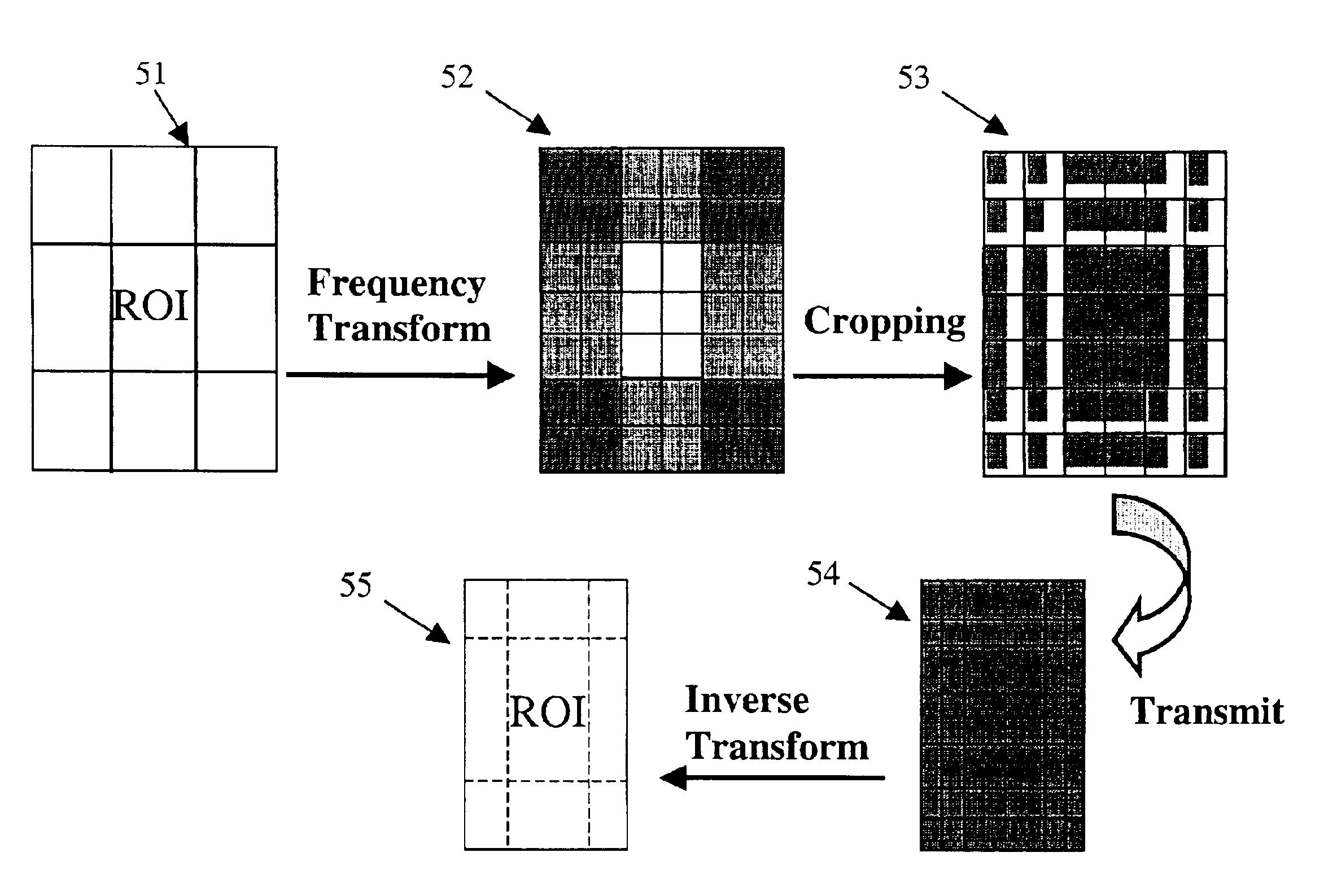Image transmission for low bandwidth with region of interest
a low bandwidth, image transmission technology, applied in the direction of selective content distribution, television systems, instruments, etc., can solve the problems of image data not being adapted to image data not “fitting” within the smaller display area of handheld devices, and difficulty in navigation through images
- Summary
- Abstract
- Description
- Claims
- Application Information
AI Technical Summary
Benefits of technology
Problems solved by technology
Method used
Image
Examples
Embodiment Construction
[0025]In general, the system and method of the present invention is a technique of transmitting an image adapted to a first display area size, such as a standard computer screen having a particular pixel-by-pixel resolution, to an apparatus having a smaller display area size by scaling the image in the spatial domain by means of coefficient cropping in the frequency domain. When the cropped coefficients are used to display an image within the second smaller display area, a scaled version of the image is displayed. In a specific embodiment, frequency domain coefficients are cropped such that a region of interest of the image is scaled down less than the remainder of the image when displayed in the second smaller display area. Scaling in this manner provides the user with a readable region of interest and with the remainder of the image scaled down so as to facilitate easy image navigation by the user. Furthermore the system and method is a technique of transmitting image data to the ...
PUM
 Login to View More
Login to View More Abstract
Description
Claims
Application Information
 Login to View More
Login to View More - R&D
- Intellectual Property
- Life Sciences
- Materials
- Tech Scout
- Unparalleled Data Quality
- Higher Quality Content
- 60% Fewer Hallucinations
Browse by: Latest US Patents, China's latest patents, Technical Efficacy Thesaurus, Application Domain, Technology Topic, Popular Technical Reports.
© 2025 PatSnap. All rights reserved.Legal|Privacy policy|Modern Slavery Act Transparency Statement|Sitemap|About US| Contact US: help@patsnap.com



